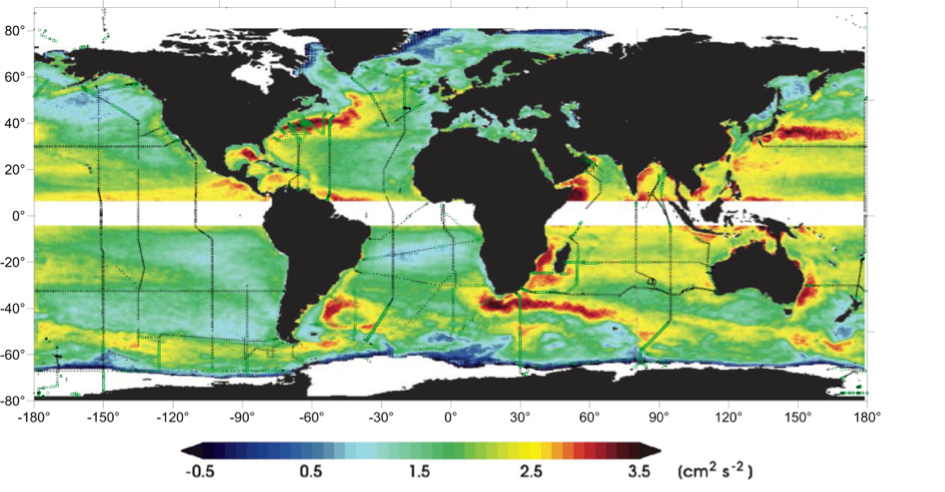Benthic nepheloid layer global compilation: an invaluable resource for GEOTRACES researchers
Models simulating any oceanic tracer biogeochemistry require a good depiction of the particle distribution, key to incorporating properly scavenging-remineralization processes. However, this kind of description is still rare.
Gardner and co-workers (2018, see reference below) are providing an exceptional compilation of the Benthic Nepheloid Layers (BNL) around the world.
BNLs have been mapped using 6,392 full-depth profiles of beam attenuation made during 64 cruises using their transmissometers mounted on CTDs in multiple national/international programs including WOCE, SAVE, JGOFS, CLIVAR-Repeat Hydrography, and GO-SHIP during the last four decades. Not surprisingly, intense BNLs are observed where eddy kinetic energy (EKE, see figure below) in overlying waters, mean kinetic energy 50 m above bottom, and energy dissipation in the bottom boundary layer are the highest. Therefore, intense BNLs are observed in the Western North Atlantic, the Argentine Basin, parts of the Southern Ocean and areas around South Africa. Contrastingly, most of the Pacific, Indian, and Atlantic central basins do not display strong sediment resuspension.

Figure: Map of log of surface eddy kinetic energy (EKE) based on satellite observations during 2002–2006 with transmissometer station locations superimposed.
Please click here to view the figure larger.
Reference:
Gardner, W.D., M.J. Richardson, A.V. Mishonov. Global Assessment of Benthic Nepheloid Layers and Linkage with Upper Ocean Dynamics. Earth and Planetary Science Letters 482 (2018) 126–134. https://doi.org/10.1016/j.epsl.2017.11.008
